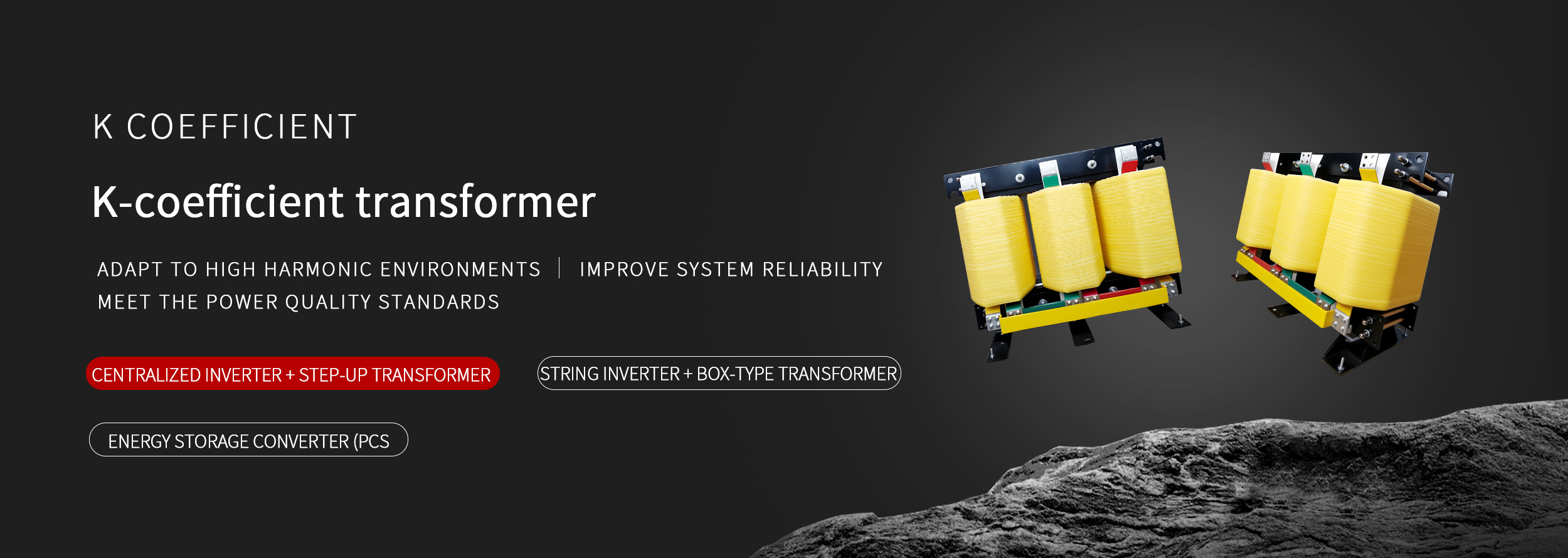undefined
What are the advantages and disadvantages of using a K-factor isolation transformer compared to a standard isolation transformer?
Release time:
2025-08-07
 What are the advantages and disadvantages of using a K-factor isolation transformer compared to a standard isolation transformer?
What are the advantages and disadvantages of using a K-factor isolation transformer compared to a standard isolation transformer?
K-factor isolation transformers and standard isolation transformers both provide electrical isolation between primary and secondary windings, but they differ significantly in their ability to handle harmonic distortions from nonlinear loads. Below is a detailed comparison of their advantages and disadvantages:
Advantages of K-factor Isolation Transformers
1. Superior Harmonic Handling
K-factor transformers are engineered to withstand harmonic currents generated by nonlinear loads (e.g., computers, VFDs, LED lights). Their design (larger conductors, reinforced windings, enhanced neutrals) minimizes overheating and power loss caused by harmonics, which is critical in modern systems with high electronic equipment density.
Standard isolation transformers lack these features and may overheat, degrade insulation, or fail prematurely when exposed to significant harmonics.
2. Increased Durability in Non-Linear Environments
They use high temperature insulation (e.g., 220°Crated materials) and robust core designs to resist damage from harmonic induced heat and eddy currents.
Standard transformers typically use lower-grade insulation (e.g., 105°C) and are prone to insulation breakdown under harmonic stress.
3. Enhanced Neutral Conductor Capacity
In three-phase systems, triplen harmonics (3rd, 9th, 15th, etc.) accumulate in the neutral conductor. K-factor transformers often have oversized neutrals (2–4x standard size) to handle this extra current, preventing neutral overheating.
Standard transformers have undersized neutrals, risking overloads in harmonic-rich environments.
4. Improved System Reliability
By mitigating harmonic-related issues (e.g., voltage distortion, equipment interference), they reduce downtime and extend the lifespan of connected devices (e.g., servers, medical equipment).
Standard transformers may exacerbate harmonic problems, leading to frequent failures in sensitive equipment.
Disadvantages of K-factor Isolation Transformers
1. Higher Cost
Their specialized design (oversized components, high-grade materials) makes them significantly more expensive than standard isolation transformers. For linear load applications (e.g., resistive heaters, incandescent lighting), this cost is unnecessary.
2. Larger Size and Weight
The reinforced windings, larger conductors, and oversized neutrals increase their physical footprint and weight. This can be a drawback in space-constrained areas where a standard transformer would suffice.
3. Over Engineering for Linear Loads
In environments with purely linear loads (no harmonics), K-factor transformers offer no performance benefit. Their added features become redundant, making them an inefficient choice compared to standard models.
4. Potential Overheating with Mismatched K-ratings
Choosing a K-factor too low for the application (e.g., using K4 for a K13 load) can still lead to overheating. Proper sizing requires analyzing harmonic levels, which adds complexity to system design.
Advantages of Standard Isolation Transformers
1. Lower Cost
They are simpler in design, using standard materials and smaller components, making them more affordable for applications with linear or low-harmonic loads.
2. Compact Size
Without the need for oversized conductors or reinforced windings, standard transformers are lighter and more space-efficient, ideal for tight installations with minimal harmonics.
3. Sufficiency for Linear Loads
For loads like resistive heaters, motors without VFDs, or incandescent lighting (which draw smooth sine wave currents), standard transformers perform reliably with no harmonic-related issues.
Disadvantages of Standard Isolation Transformers
1. Vulnerability to Harmonics
They cannot handle nonlinear loads effectively. Harmonics cause excessive heating, insulation degradation, and reduced efficiency, leading to premature failure in environments with electronics, VFDs, or medical equipment.
2. Inadequate Neutral Conductors
Their undersized neutrals are prone to overload in threephase systems with triplen harmonics, risking fire hazards or system shutdowns.
3. Increased Downtime in Modern Systems
In facilities with high nonlinear loads (e.g., data centers, hospitals), standard transformers fail more frequently, requiring costly replacements and disrupting operations.
Summary Table
Factor* | K-factor Isolation Transformer | Standard Isolation Transformer |
Harmonic Handling | Excellent (designed for nonlinear loads) | Poor (fails under significant harmonics) |
Cost | Higher (specialized materials/components) | Lower (simpler design) |
Size/Weight | Larger/heavier (oversized components) | Compact/lighter (standard components) |
Durability in Non-Linear Environments | High (high temperature insulation) | Low (prone to overheating/insulation breakdown) |
Best For | Data centers, hospitals, industrial plants with VFDs | Linear loads (heaters, incandescent lights, simple motors) |
In short, K-factor transformers are indispensable for modern systems with nonlinear loads, despite their higher cost, while standard transformers remain economical for linear load applications.
Related news
undefined


















